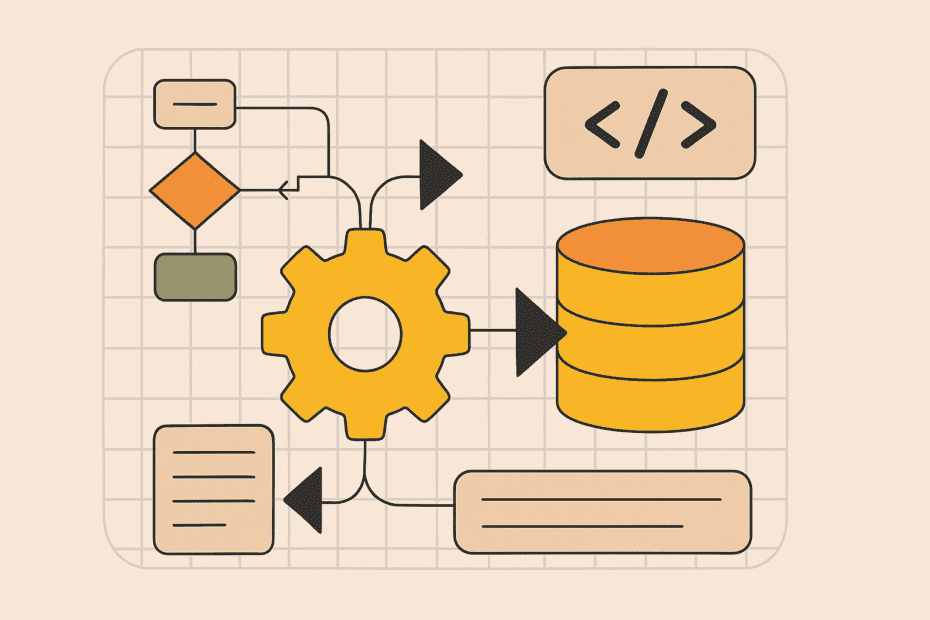For years, the promise of “no-code” development has been whispered in the tech industry, often met with a healthy dose of skepticism. Could software development truly be democratized, moving beyond the realm of specialized engineers? Like many, I’ve been cautiously optimistic, observing various iterations of no-code tools emerge, each with varying degrees of success. However, a recent conversation with Prakash Chandran, founder of the no-code backend platform Xano, has shifted my perspective from cautious observer to genuine believer.
Chandran, a seasoned product and UX leader whose career spans Google’s early days (think Picasa and Google Calendar) and the tumultuous startup trenches, didn’t arrive at no-code through abstract theorizing. His journey was forged in the fires of practical experience, recognizing a persistent, often overlooked bottleneck in software creation: the backend. During our discussion on the Startup Project podcast, he articulated a frustration many product-focused individuals quietly harbor: the opaque and often cumbersome nature of backend development.
The Backend as a Black Box
Chandran’s experience resonated deeply. As someone deeply invested in the product side – the design, the user experience, the core functionality – he felt a tangible disconnect from the underlying engineering process. “You have to pay for an expensive engineer,” Chandran explained, “They’re kind of like a car mechanic. If they tell you something is going to take a month and tens of thousands of dollars, you just kind of have to believe them.” This sentiment highlights a crucial, often unspoken tension in product development. Product leaders, designers, and even business stakeholders are frequently reliant on engineering timelines and cost estimates that can feel arbitrary, lacking transparency and direct control.
This isn’t to diminish the crucial role of backend engineers, but rather to acknowledge an evolving challenge. As software systems grow more intricate, distributed, and demanding, the backend – the unseen infrastructure powering every application – has become a domain of increasing specialization and complexity. Even for seasoned full-stack developers, navigating the ever-shifting landscape of backend technologies can feel like an uphill battle. The initial promise of cloud computing to abstract away infrastructure complexities has, in some ways, been replaced by a new layer of abstraction that can be just as daunting to navigate. The very act of starting a new application, even a relatively simple one, can involve a steep learning curve and a significant investment of time and resources simply to establish the foundational backend.
Xano’s No-Code Solution: Reclaiming Simplicity and Scale
Chandran’s solution, embodied in Xano, is a radical proposition: a fully scalable, enterprise-grade backend platform that requires absolutely no code. This isn’t another iteration of website builders or simplified database tools. Xano, as Chandran describes it, represents a “new part of no-code,” engineered from the ground up to handle the demands of production applications, not just prototypes. The key differentiator lies in its singular focus: the backend. While other no-code platforms often attempt to be full-stack solutions, Xano deliberately concentrates on the server, database, and API layers, allowing users to connect it to any frontend they choose. This focused approach, Chandran argues, allows for both unprecedented simplicity and robust scalability.
During our conversation, Chandran emphasized that Xano isn’t just about simplifying the interface; it’s about fundamentally rethinking the development process. He positions Xano as a “visual programming language,” one that empowers users to articulate complex application logic without writing a single line of code. This isn’t about dumbing down development; it’s about making the core concepts of software engineering – variables, loops, conditionals – accessible to a broader audience through a visual, intuitive interface.
Empowering the Citizen Developer and Embracing AI
Xano’s target user is the “citizen developer,” a Gartner-defined persona representing product owners, system thinkers, and business experts who understand the intricacies of application logic but lack traditional coding skills. These are the individuals who possess deep domain expertise and a clear vision for software solutions but have historically been reliant on engineering teams to translate their ideas into reality. Xano aims to bridge this gap, empowering these citizen developers to directly build and deploy their own applications, reclaiming control over the backend and accelerating the entire development lifecycle.
Looking ahead, Chandran is keenly focused on the intersection of no-code and artificial intelligence. He doesn’t envision AI replacing no-code platforms, but rather as a powerful synergistic force. He suggests AI could serve as a generative tool, creating initial application scaffolding, while platforms like Xano provide the crucial visual canvas for refinement, customization, and the infusion of human intention. This partnership, he argues, will unlock a new era of software creation, where AI augments human creativity and no-code platforms provide the accessible, powerful tools to bring those visions to life.
Beyond the Hype: A Glimpse of the Future?
My conversation with Chandran left me with a sense of optimism I hadn’t anticipated. Xano isn’t just another no-code tool; it represents a potentially significant shift in how we approach software development. By squarely addressing the complexities of the backend and empowering a new generation of “citizen developers,” Xano is challenging the traditional paradigms of software creation. While the no-code space has often been associated with limitations and compromises, Xano’s architecture and vision suggest a future where powerful, scalable applications can be built with unprecedented speed and accessibility. It’s a future where product leaders and business innovators can reclaim control over the entire development process, moving beyond the backend bottleneck and focusing on what truly matters: building impactful, user-centric solutions. Whether Xano will fully realize this ambitious vision remains to be seen, but my conversation with Prakash Chandran has certainly made me a believer in the transformative potential of no-code backends, and the exciting possibilities they unlock.

Nataraj is a Senior Product Manager at Microsoft Azure and the Author at Startup Project, featuring insights about building the next generation of enterprise technology products & businesses.
Listen to the latest insights from leaders building the next generation products on Spotify, Apple, Substack and YouTube.
